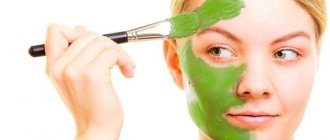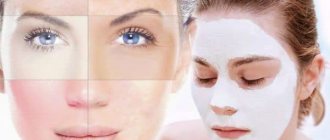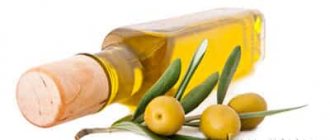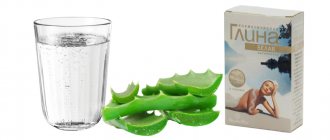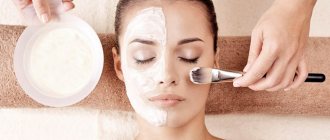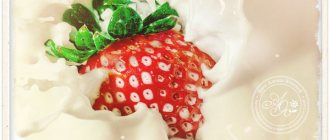Our legs experience enormous stress every day. Unfortunately, corns often appear on them, the skin becomes rough and cracks. This is especially unpleasant in the warm season, when you want to wear open shoes or sandals. You can, of course, go to a beauty salon to get the skin of your feet in order with the help of expensive pedicure procedures. You can also do this at home using available ingredients. To get rid of rough, rough skin on your soles, especially your heels, we recommend using an exfoliating foot mask.
Why do feet need care?
People don’t think much about the fact that their feet need careful care no less than their facial skin. Many limit themselves to ordinary water procedures. In addition, most people wear uncomfortable shoes; women prefer high-heeled shoes.
All this leads to a roughening of the skin: it becomes dense, and defects appear on the feet. But in addition to cosmetic inconvenience, lack of care for the epidermis of the lower extremities can lead to the development of skin pathologies.
To keep the skin of your feet soft and healthy, you need to constantly care for them. For this, not only water procedures are important, but also foot baths and masks. The last option is the most preferable, since with its help it is possible to achieve the maximum positive result.
Masks help relieve the feeling of heaviness in the legs, soften the skin, and prevent the appearance of corns, calluses, and roughening.
The best products on the market
If you don't like the idea of making your own scrub, you can trust cosmetic companies to keep your feet smooth. Moreover, now the market is literally bursting with the number of funds for any needs and tastes.
FootWorks by Avon
Avon has two variations of the FootWorks scrub:
- FootWorks "Mojito and Lime" . The scrub helps quickly remove flaking and deeply moisturize the skin. The composition includes fine abrasive particles that allow you to use the product on both feet and ankles. Tube volume – 75 ml.
- FootWorks Sea Salt (Tonic). Combats the feeling of fatigue and heaviness in the legs, effectively removes dead skin. The texture of the scrub is close to gel, so it spreads easily and is suitable for scrubbing the legs as well. Tube volume – 75 ml.
FootWorks "Mojito and Lime":
FootWorks "Sea Salt"
Composition from Savonry
The difference between this scrub and others is its thick consistency. Sea salt acts as a cleaning abrasive here.
Additionally, the composition includes the following components:
- shea butter (nutrition, moisturizing);
- almond oil (slows down the aging process, saturates with B vitamins, potassium, zinc);
- jojoba oil (softening, moisturizing, rich in vitamin E);
- essential rose oil (aromatic component, rejuvenation, toning);
- vitamin E (rejuvenation, detoxification).
The advantage of the product is its naturalness. There are no synthetic components in the composition, as stated on the packaging. The product works great with:
- corns;
- ingrown hairs;
- dry skin.
We recommend: How does a scrub for blackheads on the face work? The best finished products and product recipes
Product volume – 200 ml.
For dry skin Scholl
A cosmetic product from manufacturers of pedicure instruments contains particles of pumice. They help remove dead skin and flaking in one application.
A serious drawback of the scrub, according to many users, is the pungent and unpleasant odor . Product volume – 75 ml.
Types of masks
There are several types of mask procedures that are used depending on what effect a person wants to get.
Nutritious
Nourishing masks usually contain a fatty base, most often various oils. Their composition is distinguished by a variety of useful components. All this helps to provide the skin with valuable elements, which helps to avoid dry skin, the formation of cracks, corns and other defects.
Exfoliating
Such masks are essentially peeling, which is used for deep cleansing of the skin. They get rid of dead cells and help renew the epidermis. Thanks to the use of exfoliating foot masks at home, the appearance of calluses, corns and other manifestations of coarsening of the integument is prevented.
Tonic
Such masks allow you to get rid of the feeling of heaviness in your legs, relieve fatigue, and soften the skin. They are often used after a working day to relieve tension in the lower extremities.
Moisturizing
The skin on the legs is constantly exposed to stress and adverse effects of the external environment. This affects its condition: the cover becomes dry, cracks appear on it, which cause discomfort while walking.
Moisturizing masks help avoid such problems. They provide the epidermis with moisture, prevent excessive dryness of the skin and help soften it.
Healing
Such masks are made on the basis of medicinal herbs that have the property of healing wounds. With their help, you can speed up the process of getting rid of cracked heels, various cuts and other abrasions.
Reviews
Inna, 48 years old
I believe that a woman simply needs to take care of herself. And you don’t have to visit expensive beauty salons. I really love making moisturizing face masks at home. We usually get together with our girlfriends for these “beauty sessions.” Moreover, we “pamper” not only the face, but also the hair. Another “favorite” of mine, which my girlfriends also appreciated, is the mustard mask; it is very suitable for thin hair. And, of course, don’t forget about the hard-working legs. Once every two months I apply special foot exfoliation products. What I like best is the effect of the oatmeal exfoliating mask. I recommend.
Yulia, 35 years old
I used to be skeptical about home beauty treatments. But one day, on the advice of my sister, I prepared a starch mask for the face, which got rid of fine wrinkles in one use, I realized that it could really be used instead of Botox. And after that I started making scrubs and sugaring pastes with my own hands. And, naturally, I didn’t ignore the skin of my feet. Exfoliating masks are easy to make at home, and the effect can be better than an expensive salon procedure. My favorite is a mixture of coffee, honey and cinnamon.
What exfoliating foot masks do you make at home? Share your proven recipes, reviews and recommendations.
Rules for applying a foot mask
When carrying out the procedure, the following important recommendations should be observed:
- Before applying the mask, you need to wash your feet thoroughly.
- Hot water baths are used to steam the skin of the feet before the procedure. This allows you to achieve maximum effect.
- After applying the product, you need to wrap your feet with cling film, polyethylene, or a warm cloth.
After the cosmetic mass has completed its effect, the limbs should be washed with water, then treated with cream and given a relaxing massage.
How to use the product correctly
To enhance the effectiveness and achieve maximum effect from the product, you should know how to use the foot scrub correctly. The recommendations are quite simple.
- Before applying the composition, you need to steam your feet. For these purposes, it is best to use a bath prepared with a decoction of herbs (chamomile, sage), with sea salt or with the addition of your favorite essential oils. The duration of this stage is 10-20 minutes.
- An exfoliating composition is applied to washed and warmed skin with gentle massaging movements. The recommended direction is from the heel to the toes and from the big toe to the little toe. A gentle massage of your fingers and the spaces between them will help relieve tension and accumulated fatigue. The applied mixture should be left on the feet for 10 minutes.
- Final stage: rinse off the scrub with water at a comfortable temperature. Dry your feet and apply a nourishing or moisturizing cream to the skin.
Editor's choice: The difference between hair removal and depilation - what is the difference between the procedures
This procedure is best performed before bedtime so that all the nutrients contained in cosmetic products have the maximum targeted effect.
Masks with dairy products
This type of product contains lactic acid. Thanks to it, it is possible to gently get rid of the stratum corneum of the skin of the legs.
Mask with kefir
To prepare the substance, a tablespoon of kefir is mixed with a teaspoon of salt and 100 g of oatmeal. Leave the mass for a while to swell. After this, the composition is applied to the plantar part of the feet and wrapped in film. Removed after 60 minutes.
Mask with sour cream
This product is especially suitable for people with dry skin. For the procedure, it is recommended to use not a pure sour cream product, but with the addition of additional ingredients. Enhance the effect with ground coffee or corn grits. The mask is applied to the feet and kept for half an hour.
Correctly remove keratinized epidermis!
Do not use sharp tools - abrasive files, blades, natural pumice. Removing the stratum corneum with force and friction heats the skin, its protective mechanisms are activated, and keratosis accelerates.
Small pedicure devices sold in online stores are no less dangerous for the skin. They have very weak motors, so when they are used, the cutter is automatically pressed against the skin, which leads to overheating of the dermis and the consequences described above.
Our advice is to sign up for a hardware pedicure with a podiatrist. This is the best decision. Removing the stratum corneum will be safe. During the consultation, the podiatrist will tell you how to properly maintain the results of a pedicure using synthetic pumice.
Herbal masks
For a tonic and healing effect, products based on medicinal plants are often used. Many herbs help speed up the healing of skin damage, increase tone, relieve tension and fatigue.
Mask with celandine
This plant is found in almost every yard, but few people pay attention to it. But it has valuable medicinal properties, which allows it to be used for cosmetic and medical purposes.
Celandine contains components that suppress inflammation, accelerate wound healing, and destroy pathogenic microflora.
To prepare the mask, use fresh herb, pass it through a blender and apply it to your feet, then wrap it in cling film. Keep the mixture for half an hour, then wash off and lubricate the skin with cream.
Plantain mask
Treatment with this herb helps prevent or eliminate cracked heels. To prepare the product, mix 20 g of plantain, 10 g of burdock leaves and the same amount of green onions. All herbs are put in crushed form. The resulting mixture is placed on a bandage and wrapped around the feet. It is also recommended to wear socks on top.
Using foot creams
4. Having a cream that suits your feet. When buying a cream, study the composition, it should contain vegetable oils that nourish the skin and promote regeneration, and if the cream also contains components such as allantoin, bisabolol or panthenol, then it will also soften the corns and calluses that form on the feet, if you Due to the nature of your work, you have to stand on your feet for a long time, or you are overweight.
Creams containing urea, glycerin, lecithin, aloe extract, collagen have a moisturizing effect, moisture is retained in the skin of the feet, which helps reduce dry skin.
Foot creams: softening effect: White Tea cream, Herbalife (contains shea butter, macadamia oil, and black currant oil); Neutrogena “Norwegian Formula” balm (contains shea butter, allantoin, bisabolol, panthenol);
moisturizing effect for feet and heels Byrelax, Byly with urea;
healing effect: Cucumber Heel Therapy cream, CND with urea, cucumber, chamomile and aloe vera extracts; smoothing gommage: cream “Plant beauty care” Beaute Des Pieds, Yves Rocher with bio-essential oil and bio-extract of lavender;
restoring: cream Spa Hand & Foot Smoother Retexturızıng, H2O Plus with salicylic and lactic acids and shea butter; scrubs: “Lemon and Sage” Bare Foot, Freeman with tea tree oil, lemon and sage extracts.
Masks with cereals
Cereals are one of the healthiest foods, rich in valuable components. They are used not only in cooking, but also in cosmetic skin care procedures.
Oat mask
For cooking, take 3 tbsp. l. oatmeal and mix them with a large spoon of nuts and the same amount of sour cream. Mix thoroughly to obtain a homogeneous mass. Then apply to the feet and keep for 20 minutes.
Mask with flakes
The recipe for the product is as follows: make a mixture of 5 tablespoons of oatmeal and 2 tbsp. spoons of vegetable oil. The flakes are pre-cooked. The mass is applied to the skin of the legs and left for an hour.
Mask with semolina and sea salt
To carry out foot procedures, prepare a mixture of half a glass of semolina, 2 tbsp. l. salt, 1 tbsp. l. sour cream. All components are mixed until a homogeneous mass is obtained. If desired and there is no allergic reaction, you can add a little honey.
The product is applied to the skin of the feet, wrapped in film, put on socks and left for 20 minutes.
Corn mask
The product is prepared from a glass of corn flour and 500 ml of milk. Mix the ingredients and cook for 5 minutes, stirring constantly. Allow to cool to a comfortable temperature and add 2 large spoons of liquid honey. Mix the product well, apply to the skin, and leave for half an hour.
Baths
The main purpose of the bath is soaking, but you can supplement ordinary water with ingredients that will perform an additional function - relieve fatigue, have an antimicrobial effect, strengthen nails or saturate the skin with useful substances.
With sea salt
Sea salt is a powerful antiseptic. In addition, salt baths help relieve tension, eliminate swelling caused by excessive exercise and prevent the development of fungus.
To prepare the solution:
- 2 tbsp. l. dissolve in two liters of warm water, temperature about 40 degrees;
- Soak your feet in the bath for 20 minutes;
- Rinse your feet and lubricate with moisturizing balm or cream.
Repeat the bath 2-3 times every 7 days. As a result of using sea salt, nails become noticeably stronger, the feeling of fatigue disappears, and swelling disappears.
To expand the spectrum of action, add 3-4 drops of tea tree oil, a couple of drops of iodine or chamomile tincture to the saline solution. Depending on the additional components, the bath will moisturize dry skin or prevent nails from peeling.
With hydrogen peroxide
3% hydrogen peroxide in the bath helps to soften keratinization and corns to facilitate their subsequent removal:
- Dilute 4 tbsp. l. peroxide in 2 liters of water;
- Steam your feet for 15 minutes;
- After the required time has passed, apply pure peroxide to problem areas and leave to act for 3-4 minutes;
- Remove keratinization with a pumice stone or grater, dry your feet and rub in a moisturizing or nourishing cream.
You can repeat the procedure once a week and only if there are keratinized areas.
From milk with lemon
Milk bath has a pronounced moisturizing and softening effect:
- Heat the milk to 40 degrees and add 3-4 drops of lemon juice or 6 drops of lemon essential oil;
- Leave your feet in the milk bath for 15 minutes;
- If necessary, remove keratinization with pumice;
- Rinse your feet and lubricate them with rich cream.
Soak before going to bed and after completing all the steps, put on thick socks - the cream will be absorbed into the steamed skin overnight.
With apple cider vinegar
Apple cider vinegar has tonic and strengthening properties. The acid also breaks down the cellular bonds of the stratum corneum, which simplifies its removal during the peeling stage.
- In 3 liters of water, dilute 200 ml of apple cider vinegar and 3 tbsp. l. sea salt. To add aroma, you can add 2-3 drops of your favorite essential oil - shea, jojoba, ylang-ylang;
- Soak your feet in the bath for 20 minutes;
- Clean your feet from roughness with a pumice stone or pedicure grater;
- Rinse and moisturize with cream.
Repeat twice a week.
Review of foot peels for professional and home use
With aspirin
Acetylsalicylic acid, like vinegar, works as a light keratolytic - it destroys cellular bonds in growths and calluses.
After taking an aspirin bath, the roughness is removed easily and painlessly:
- Crush 4 tablets to a powder and dissolve in 2 liters of warm water;
- Immerse your feet in the liquid for 20 minutes, then remove the soaked keratinization with a pumice stone or scrub;
- Rinse your feet thoroughly and lubricate with cream.
It is recommended to take an aspirin bath no more than twice a month.
Foot bath recipes
What are foot wraps, how and why are they made?
Vegetables
Fresh vegetables contain a large amount of beneficial substances needed by the skin. Therefore, products prepared on their basis provide the skin with nutrition, moisturize and tone it.
With cucumber
To carry out the foot procedure, take a fresh cucumber and pass it through a grater. Add 3 tablespoons of sour cream, 2 large spoons of lemon, mix and apply to feet for 20 minutes, then rinse with cool water.
With zucchini
The vegetable is chopped, passed through a meat grinder, placed on gauze and wrapped around the feet. The top is insulated with socks. Keep the mixture for 30 minutes.
With onions and honey
A mask based on these ingredients is prepared according to the following scheme: the onion is baked in the oven or boiled, then kneaded. Add a small spoon of liquid honey to it and mix thoroughly. The resulting product is applied to problem areas of the skin, wrapped in film and left for 40 minutes.
Honey compress
Honey is a powerful antiseptic with pronounced moisturizing properties. To create a homemade honey compress you will need:
- Strip of cotton fabric – 2 pcs. Measure the length of the strip along your leg - it should be enough to wrap the heel and fix it on the top side of the foot. On average, 25-30 cm in length and 15 cm in width will be enough.
- 6 tbsp. l. liquid honey.
Honey compress is best done at night.
How to treat cracked heels with honey:
- Place 3 tablespoons of honey on the center of each strip.
- Distribute it in a thin layer so that after applying it to the heel, it is completely covered with honey cloth. Approximately, you should get a honey square in the center of the strip measuring 15 by 15.
- Wrap the cloth around the heel of your foot so that it comes into contact with the place where the honey is distributed.
- Fix the fabric on the upper side, wrap your feet with film and put thick cotton socks on top.
Repeat the procedure every evening for 5 days. Such honey compresses help get rid of cracks caused by external factors - stress, dust, uncomfortable shoes and dryness. They will also strengthen local immunity, which will be an excellent prevention of damage.
Aspirin mask
Acetylsalicylic acid is a good helper in preventing and eliminating roughening of the skin on the legs. For this reason, it is often used as part of masks. To prepare, crush 10 tablets, add a tablespoon of lemon juice and clean water.
The resulting product is applied to the skin, the feet are wrapped in cellophane and socks are put on. Keep the mask on for 20 minutes. Then you need to rinse off the product with warm water, clean your feet with a pumice stone and apply any nourishing cream.
Use cream and deodorant
Recommendations for foot cream can be obtained during a consultation with a podiatrist. The product is selected individually, taking into account the characteristics of the skin, typical problems and lifestyle.
Moisturizing and nourishing creams are best suited for dry skin on the feet. For parchment skin, strengthening additives such as microsilver are recommended.
Oil creams are not recommended because they create a film effect: moisture collects in the space between the skin and the cream layer, which can lead to maceration of the epidermis.
Do not apply cream between your fingers. The area should always remain dry. Tightly fitting fingers impede air access, which is why moisture often collects there, creating the so-called greenhouse effect. Dry parchment leather is prone to maceration and cracking. Normal skin also macerates, and wounds promote the development of mycosis.
Remember that it is impossible to remove cracks and calluses using cream. Professional podiatry required. Without proper removal of the keratinized epidermis and replacement of worn-out shoes, healing is impossible.
Foot deodorants are especially recommended for sweaty and hyperhydric skin, which is often accompanied by a specific unpleasant odor. Reduce sweating and neutralize unpleasant odors. Choose a deodorant without aluminum salts.
Mask with ground coffee
This procedure produces an excellent exfoliating effect and helps rid the skin of dead cells. In addition, the mask has a pleasant smell, but has the ability to stain cracks on the feet, if any.
The cosmetic product is prepared in the following proportion (unit of measurement – tablespoon):
- ground coffee – 5;
- salt – 2;
- cinnamon – 2;
- olive oil – 1.
The mass is spread on the legs and kept for 20 minutes.
Foot care tips
1. The first procedure is foot baths. Remember how nice it is to soak your feet in a bath with sea salt and oil after a working day. The legs then become soft, pleasant, smooth. This has a very beneficial effect on the skin of the feet. The feet are steamed, and this helps us get rid of corns.
You should take a foot bath for 15 minutes, or until the calluses turn white. A foot bath can have relaxing, cleansing, softening, and toning effects. Everything will depend on the components you choose. For cleansing, for example, you can add soda, sea salt is suitable for toning, and pine needles or chamomile are suitable for a strengthening effect.
If you decide to come to the salon, you can make an exfoliating bath with special fish.
2. After cleansing, there is a stage of exfoliation or peeling of the feet. It can be alternated with masks. The main property of peeling is to cleanse the skin of dead cells; it produces a scrub effect. The mask has a wider range of effects on our skin. But still, if you want to achieve an exfoliating effect, peeling will have no equal.
It should be immediately noted that you can do the procedure for exfoliating your feet in the salon or at home. If you decide to exfoliate at home, then you will need a foot scrub, pumice stone and a pedicure brush. You will have to purchase brushes, but you can make the scrub yourself.
To prepare the scrub you need to take granular components. This can include ground coffee, rice, sea salt, ground eggshells and nuts. You can mix the granular components with vegetable oil and sour cream.
At home, you can choose the components that suit you best. In addition, you will save money and time that you would have spent at the salon. The effect of home peeling will be no worse, and sometimes even better.
Moreover, recently many interesting things have appeared. For example, peeling socks. The effect obtained from them lasts for six months. This is by no means an alternative to a pedicure. But it is useful to carry out such deep exfoliation at least 2 times a year.
3. The next stage of care is massage and application of cream to the legs and skin of the feet. Massage improves blood flow, relieves fatigue, improves many processes in the body, and the skin of the legs becomes smooth and elastic. Massage movements will help you relax, and the cream will nourish your skin.
Massage can also be used when applying a scrub; this will cleanse the skin well and remove dead skin particles.
Watch the video on how to self-massage your feet:
4. The beauty of our feet largely depends on the condition of our nails. Therefore, they also need to be given due attention. Toenails should not be cut very short so that they do not grow into the skin. The cuticle must be coated with oil and then gently pushed back with a wooden stick. The nails themselves must be coated with special products to strengthen them and prevent them from becoming brittle. To protect from the environment, it is recommended to coat your nails with varnish.
Watch the video on how to do a pedicure at home:
Paraffin sessions
Foot treatments using paraffin can provide the skin with moisture, nutrition, and eliminate tension in muscle tissue. You can make this mask at home. To do this, you must follow the instructions:
- Grind the paraffin mass into pieces, place in a container and put on fire to melt.
- At this time, the skin of the feet is prepared for the procedure: it is cleaned with a scrub and treated with a moisturizer.
- When the paraffin melts and the temperature of the mass becomes comfortable, lower your feet into it.
- After 10 seconds, the feet are removed from the bath, but are not wiped, but are allowed to harden.
- Repeat this several times.
- Wrap your legs in polyethylene, cover them with cloth and leave for half an hour.
- Remove the paraffin layer.
The substance helps get rid of fine wrinkles, make the skin healthier, tighter, and increase muscle tone. The mask also eliminates swelling, prevents salt deposits, and relieves pain. But not all people can carry out the procedure.
It is prohibited to use paraffin for diabetes mellitus, high blood pressure, varicose veins, skin pathologies and violations of the integrity of the integument.
Causes and treatment of cracked heels
This problem causes considerable discomfort - it is often accompanied by inflammation, and the affected areas hurt with every touch. There are several reasons for the appearance of cracks:
- Tight shoes
It compresses the legs, which leads to impaired blood supply and deterioration of the skin.
- Fungal diseases
In this case, along with pain, itching and an unpleasant odor occur.
- Lack of vitamin A and tocopherol
Leads to insufficient nutrition and dryness of the epidermis, which causes the appearance of thin cuts, and after them - deep cracks.
- Diabetes
Another internal source of the problem. Increased blood sugar levels lead to fluid loss, resulting in disruption of the sebaceous glands, dehydration of the skin and rough feet.
The cracks can become inflamed and cause pain when walking. To get rid of them, you need to visit an endocrinologist and dermatologist and only then begin treatment. Most often, treatment of heels with antibacterial and softening agents or application of special cosmetics containing antibacterial components is prescribed. For concomitant fungal infections, ointments and creams that have a fungicidal effect are used.
Prevention of rough feet
To prevent the appearance of hard spots on the soles and other parts of the limbs, each person should pay more attention to foot care, namely:
- Carry out water procedures daily.
- Do foot baths regularly.
- Pamper your feet with masks with various effects.
- Choose comfortable shoes that do not restrict your feet.
- Avoid frequent use of high heels.
- Do a foot massage.
- Treat skin pathologies in a timely manner.
The appearance of rough areas on the skin of the legs is not only an external defect that negates the beauty of the feet, but also an unpleasant sensation during movement. To prevent problems with the skin of the extremities, you should carefully care for it.
Contraindications to the use of foot scrubs
A homemade foot scrub is a rather aggressive cosmetic product. And although the skin of the feet cannot be called delicate and sensitive, the effect of scrubbing particles on it is not always beneficial. Choose another method of restoring the beauty of the dermis in the following cases:
- If there are vascular problems in the legs (telangiectasia, varicose veins);
- For dermatological diseases and trophic changes in the skin;
- If she reacts very sensitively to certain components of the scrub or to mechanical effects in general;
- For injuries and severe swelling in the area where the scrub is applied;
- If you have skin with close capillaries.
Intense mechanical action on the skin precludes the use of a scrub in areas with inflammation and damage to the integrity of the skin (open and unhealed wounds, cracks, scars). In these cases, peeling will only worsen the healing situation.
What's next?
- If you don’t have a scrub (or are too lazy to make one), then use a file after the bath to remove rough skin. It is advisable to use only the fine-grained side: rough grinding of the heels contributes to the appearance of scratches, cracks - and even greater dryness. Smoothness and tenderness of the heels can only be achieved by regular procedures with a light and non-traumatic scrubbing effect.
- The use of pumice stones is strictly not recommended. Firstly, they injure the skin of the feet, and secondly, they are a source of bacterial growth.
- When using a file, first lubricate dry heels with cream and wait for absorption - this way the procedure will be more effective.
- We use a slightly damp file, but do not put three heels under water! We polish the heels until the rough skin is completely removed.
- Now we rinse the feet in warm water, wipe them dry, generously lubricate them with rich cream and put on cotton socks.
At least 2-3 similar procedures per week - and you will not be ashamed to wear open shoes outside.
Possible medical reasons:
- Fungus. The most common cause of dry and rough skin with cracks. Unfortunately, the fungus manifests itself not only with these symptoms, and in the absence of proper treatment, the legs take on a very unsightly appearance, which is also accompanied by itching, sweating and other troubles.
- Diabetes mellitus type 2. In this case, it is very difficult to deal with skin problems, and you cannot do without consulting a specialist.
- Problems in the endocrine system. Issues of aesthetics (heels, in this case) are resolved after (or simultaneously) with treatment.
- Obesity. With this disease, the full blood supply to the lower extremities and their connection with the central nervous system is disrupted, the skin on the feet becomes thinner, and there is a tendency for the skin to crack.
- Psoriasis. With this disease, the entire immune system does not work well, and creams and hygiene alone will not get rid of rough skin on the heels - an integrated approach is needed.
It is important to understand that serious problems with the skin of the feet can be a very warning sign. Therefore, in the case when you cannot cope with cracks on your own, and the accompanying symptoms cause you inconvenience, it makes sense to consult a dermatologist and therapist.
Types of pedicure - which one to prefer?
